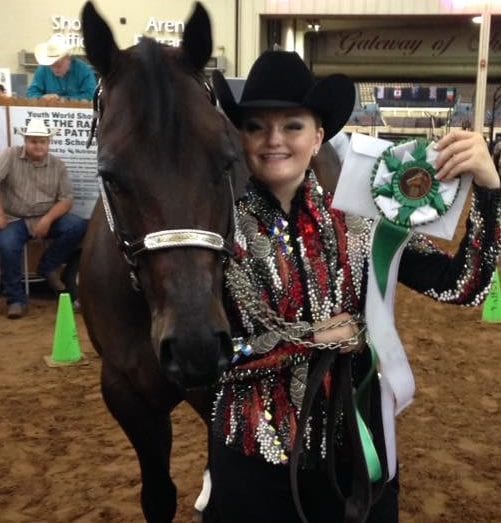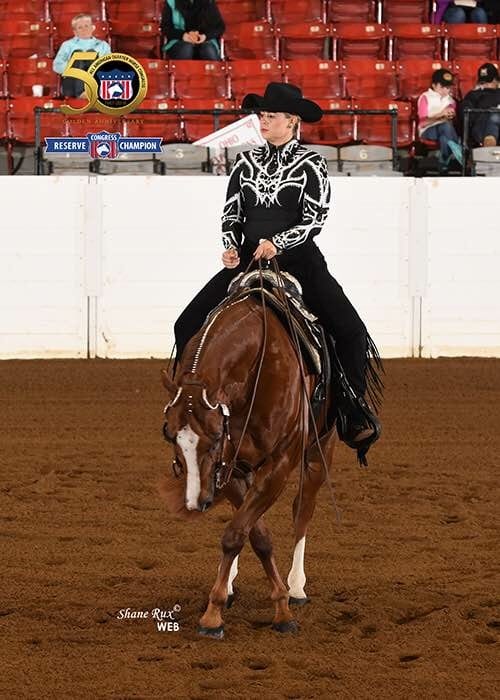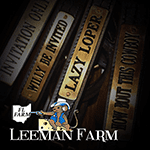Coming home to find a packet from AQHA with a novice class completion certificate can result in mixed reactions from exhibitors. Some will be thrilled that all their efforts in the show pen paid off as they earned enough points to move up a level. For others, they will be nervous that they now will compete in the level 3 classes for the specific event they noviced out.
Whatever the situation, all riders know that they will be facing new obstacles with more challenging patterns and stronger competition. Equitation patterns will include hand galloping more often; showmanship classes will have bigger spins; and hunter under saddle classes will be tougher.
All the exhibitors who have competed in the level 3 classes for some time are accustomed to these challenges, but to a recent novice rider, this can be incredibly intimidating barriers.
Depending on the attitude of the exhibitor, the challenges can be exciting because they know their skills are going to excel as they have to practice these difficult maneuvers. However, other exhibitors will fear that they will fail against the stronger riders.
Whatever the case, it is important to fully understand the path you must take to reach the highest level of success.
To help riders follow this path, four exhibitors were interviewed, all of them having recently noviced out. These riders offered advice based off of their recent advancement to the higher-level classes.
Read further to hear what youth riders Lauren (Lu) Lounsbury and Cora Wyers, along with amateur riders Cassie Riggert and Samantha Ihde, have to say about moving up to the next level of competition.
 Lauren (Lu) Lounsbury – When Lu first advanced to the level 3 classes, she lost a lot of confidence because she feared the advanced skill of the riders. “I think the difference between the levels is professionalism and the aggression,” Lu said. “I feel like the level 3 classes are almost all about being aggressive, as in taking control and truly making the pattern or rail class yours.”
Lauren (Lu) Lounsbury – When Lu first advanced to the level 3 classes, she lost a lot of confidence because she feared the advanced skill of the riders. “I think the difference between the levels is professionalism and the aggression,” Lu said. “I feel like the level 3 classes are almost all about being aggressive, as in taking control and truly making the pattern or rail class yours.”
Although she was nervous in the higher-level classes, she firmly believes that her novice classes prepared her well for the challenges she would face, and she said, “I know that I was well prepared for my level 3 classes, but at the time I was so freaked out. I do think that the novice classes gave me plenty of time to progress as a rider.”
Lu goes on to explain that if she could change anything about her time spent in novice, she would have stopped showing in the horsemanship halfway through the year. It is very common for exhibitors to quit showing in a particular class for the rest of the year so that they can get another full season of being in novice before they earn too many points. If she had taken advantage of this, she feels that she would have become more comfortable in the horsemanship, allowing her to perform better when it came time for more complicated patterns.
During her time in level 1 classes, Lu showed simultaneously in the level 3 classes. “I did show in novice and level 3 classes while I was still a novice, and I am honestly so glad that I did. Being exposed to the level three classes was a good learning experience because you are truly able to see the difference between a novice and a level 3 performance.”
For any rider who is nervous going into their first level 3 class, Lu would tell them to show confidently, even against all of the strong riders, because you will eventually find your rhythm.
 Cora Wyers – For Cora, the most important factor in showing in the level 3 classes is a rider’s confidence. When discussing her biggest challenge when showing in the higher level, she explained, “I struggled to overcome my fear of performing against the top competitors, but you have to believe in yourself. Your comfort zone will only get you so far.”
Cora Wyers – For Cora, the most important factor in showing in the level 3 classes is a rider’s confidence. When discussing her biggest challenge when showing in the higher level, she explained, “I struggled to overcome my fear of performing against the top competitors, but you have to believe in yourself. Your comfort zone will only get you so far.”
Cora gained confidence by showing in the level 1 and level 3 classes simultaneously in 2016, except for showmanship because she had already pointed out of novice. She believes this experience improved her skills in the show pen for when she would point out of novice. “I felt very prepared,” she said. “I believe that experience is definitely what has made this year so successful.”
For an exhibitor going into their first level 3 class, Cora would tell them to give it their all and show with confidence, which is advice worth taking considering her number of accomplishments inside of the show arena.
 Cassie Riggert – Cassie faced a different challenge than Cora and Lu when she pointed out of novice. “My challenge was to take a horse who was green in the all-around events when I started in the novice in 2016 and moving both he and me up to the next level of competition for the level 3 events.”
Cassie Riggert – Cassie faced a different challenge than Cora and Lu when she pointed out of novice. “My challenge was to take a horse who was green in the all-around events when I started in the novice in 2016 and moving both he and me up to the next level of competition for the level 3 events.”
Although her horse was green, she did feel prepared to move up and said the level 1 was a great way for her to gain experience and confidence showing in AQHA classes.
She also took advantage of showing concurrently in a level 3 class while she was still a novice. “It gave me another pattern to practice, and I got the experience of showing against the more seasoned competitors. It helped me see the areas I needed to keep working on as a rider. This year I have been showing in both levels for the trail and western riding, which has been beneficial for both my horse and me. The more patterns we can do the better. For me, it has worked out well to show in both levels, but I think everyone needs to talk to their trainer about the best plan for them and their horse.”
“When a novice rider moves up, I would tell them to stay positive and use every opportunity to earn and improve. Set some personal goals of things you want to work on at each show. Having a strong support system is important, as well as having a trainer you trust.”
 Samantha Ihde – Samantha told us that the biggest challenge showing in the level 3 is that the riders make fewer mistakes. “Everyone is very seasoned, and the competition is tough. If you make a slight flub in the level 3, you will get majorly marked for it, unlike the novice where the judges might give you a pass.”
Samantha Ihde – Samantha told us that the biggest challenge showing in the level 3 is that the riders make fewer mistakes. “Everyone is very seasoned, and the competition is tough. If you make a slight flub in the level 3, you will get majorly marked for it, unlike the novice where the judges might give you a pass.”
When she moved up, she worked hard to display more confidence in her rides to prove that she deserved to be showing against a talented group of horses and riders.
She goes on to explain her difficulties when she first moved up. “The biggest challenge I faced when I began showing in the level 3 classes was trying to get myself known in that division and proving that I was a serious competitor. Also, I had to overcome my nerves of showing with the best of the best.”
She thinks the novice classes helped her in this transition because it gave her time to work out any bad habits without feeling too pressured.
For any novice exhibitor showing in the level 3 for the first time, she stresses the importance of patience and confidence. “You may have won the novice every time you entered the pen, but that may not be the case in the level 3. Your time will come.”
Although the competition is harder, she explains that even the best can make mistakes, and it comes down to how you and your horse connect on that day.
All four of these competitors recognized one fundamental concept: confidence. They all stressed the fact that the level 3 is more advanced and polished than the novice, so it is crucial that you understand your horse and are comfortable performing challenging maneuvers.
Aside from the tough competitors and talented horses, it all comes down to your passion for the sport. Practice is critical, so if you want to compete against the best of the best, it’s time to do no stirrup work for a few minutes longer; to hand gallop a couple more laps; and do a couple more lead changes to ensure you and your horse are fully coordinated to allow a top performance in the level 3 classes. Mistakes will happen, but they are much less tolerated in the level 3 than in the level 1. Maintain your composure and prove to the judges that you are the top in the class.









